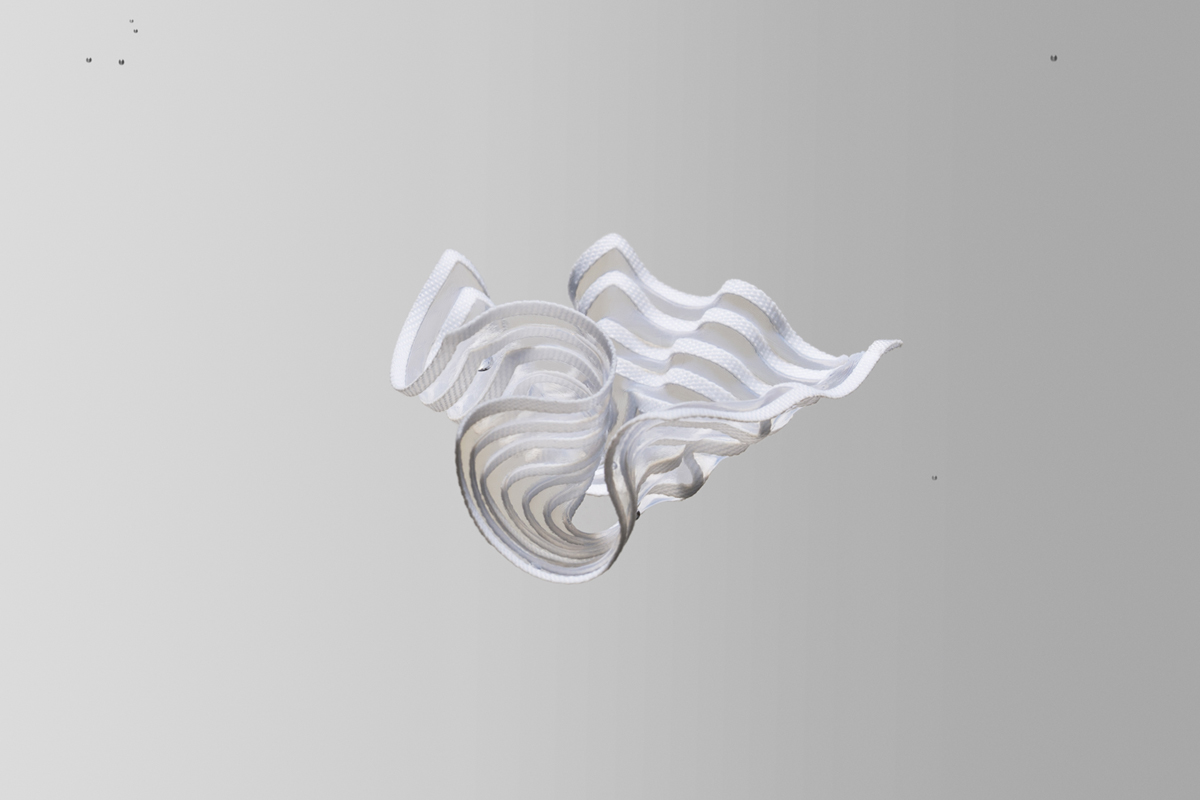In Focus — Morphologies and Rhythms
Lilies is an online representation of an archive of unique geometrical lightweight structures. We document, investigate and display indexed sets of prototypical flexible "living" patterns.
The series contains a collection of 11 models made of contrasting components — cotton and responsive active gel — IsoPropylAcrylamide-N, which shrinks in water as the temperature rises. This is a new approach to constructing soft, shape-transforming sheets and the first demonstration of the ability to design and control a hybrid sheet made of responsive gel and textile.
The sheet is immersed in a temperature controlled container filled with water. Temperature changes make the gel contract under the constraints imposed by the pattern, and as a result the sheet warps into a three-dimensional shape. In order to investigate these formations and explore their behaviour, we selected five elementary types of patterns: an angular pattern of diverging rays, a concentric pattern and a pattern of parallel strips.
Working in the lab, we've examined the relationship between shape and material through a method that converts a two-dimensional object into a three-dimensional structure. The unique characteristics of the gel and the work process it dictates, as well as choosing to work on a small- scale, has allowed us to enjoy the immediacy of the manufacturing process. In addition, the spontaneity of each sketch and gave us a direct and intuitive observation of the material. Through an array of simple exercises, we've discovered a connection between details in the structures and how they create tensions, morphologies and rhythms within it. This, in order to offer a new point of view regarding simple structures and complex geometries. Our guiding principal was to experiment with simple values which include the most basic graphic elements; lines, curves, and where the meet, while withstanding any embellishment that is not pertinent to the structure. As it is difficult to create irregularities and poetic variation through mass production, we've attempted to redefine a way of utilizing a new work method adjusted for materials.
This research is a collaboration with the The Racah Institute of Physics at the Hebrew University of Jerusalem. It means to expose, explore and advance structural and engineerical thought through debating the aesthetic potential of experimental objects and developing these objects within a series of models which embody the idea of physical programming of material.
Racah Institute of Physics
The Hebrew University of Jerusalem
CONCEPT Dana Zelig.
DOP Misha Kaminsky.
EDITOR Greg Kotler (Kasafilms.)

